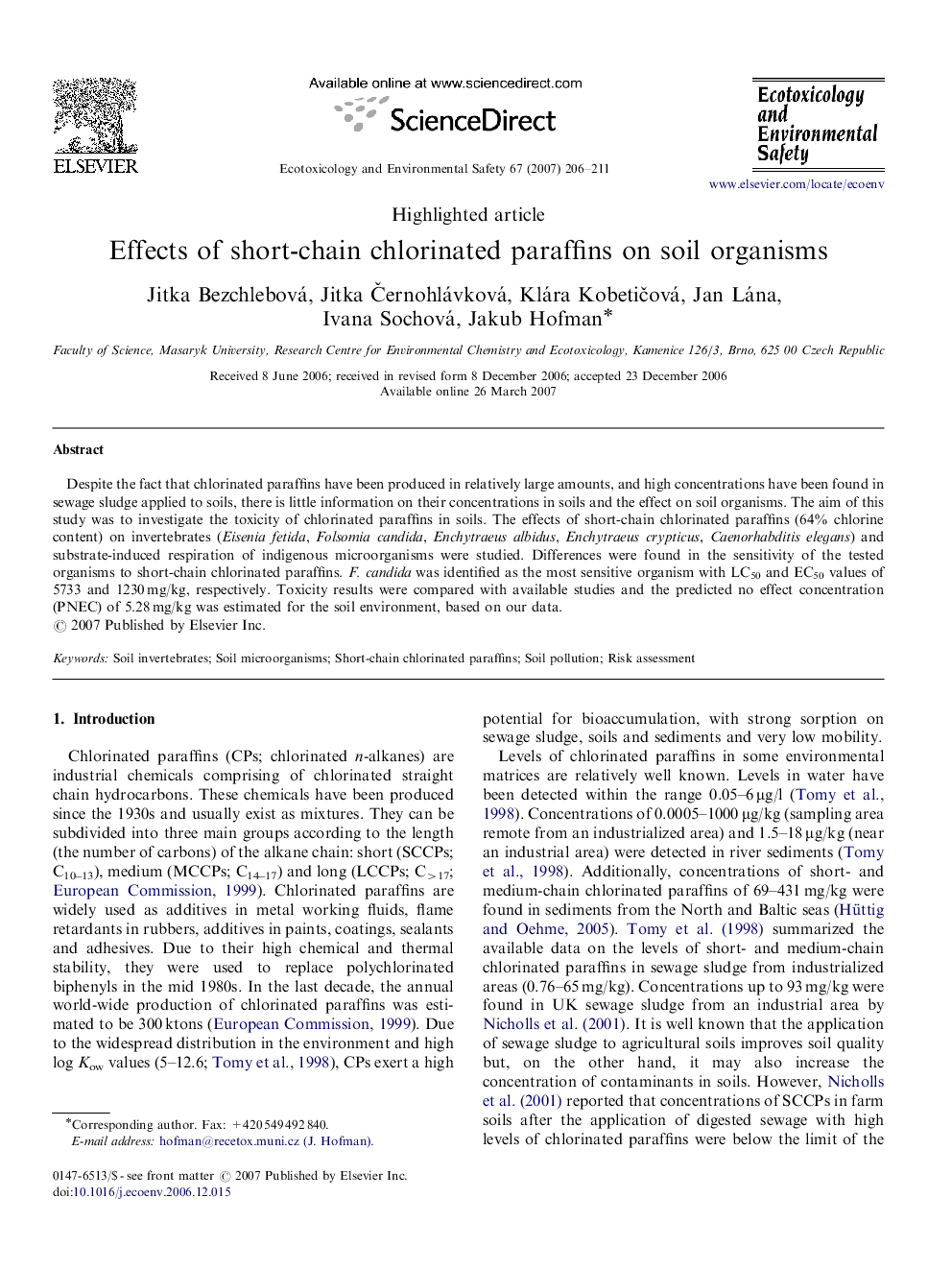| Article ID | Journal | Published Year | Pages | File Type |
|---|---|---|---|---|
| 4422215 | Ecotoxicology and Environmental Safety | 2007 | 6 Pages |
Despite the fact that chlorinated paraffins have been produced in relatively large amounts, and high concentrations have been found in sewage sludge applied to soils, there is little information on their concentrations in soils and the effect on soil organisms. The aim of this study was to investigate the toxicity of chlorinated paraffins in soils. The effects of short-chain chlorinated paraffins (64% chlorine content) on invertebrates (Eisenia fetida, Folsomia candida, Enchytraeus albidus, Enchytraeus crypticus, Caenorhabditis elegans) and substrate-induced respiration of indigenous microorganisms were studied. Differences were found in the sensitivity of the tested organisms to short-chain chlorinated paraffins. F. candida was identified as the most sensitive organism with LC50 and EC50 values of 5733 and 1230 mg/kg, respectively. Toxicity results were compared with available studies and the predicted no effect concentration (PNEC) of 5.28 mg/kg was estimated for the soil environment, based on our data.
